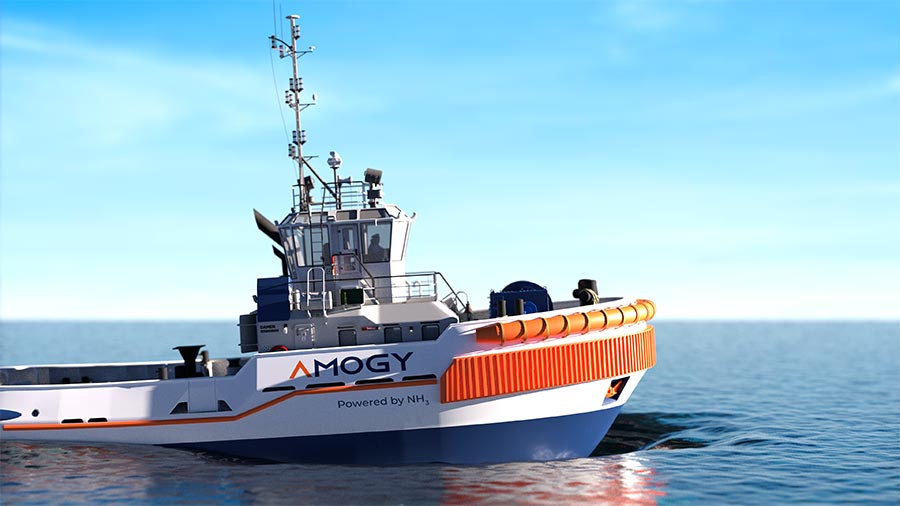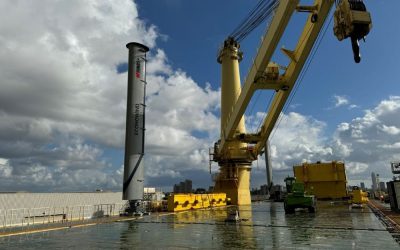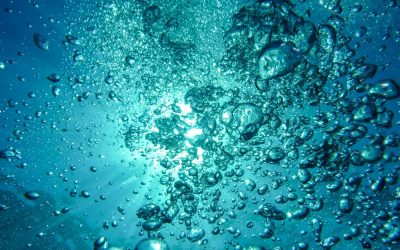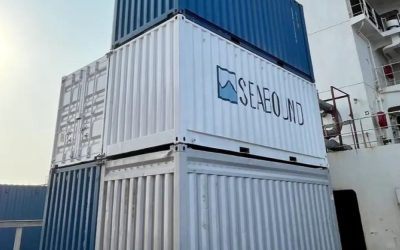Zero-emission tug helps the Big Apple get greener
Late 2023 will see a 66-year-old New York vessel enjoy a second lease of life as a carbon emission-free tugboat, thanks to an ammonia-to-power system developed by Amogy
New York-based start-up Amogy has announced its plans to unveil a zero-emission tugboat later this year, utilising ammonia as its alt-fuel of choice. Rather than opting for a newbuild, the demonstration tug will be a 1957-built model, retrofitted with a 1MW version of Amogy’s ammonia-to-power system.
Upon launch, the tug will undertake its initial voyage on an inland waterway in upstate New York. It will be Amogy’s first significant venture into the marine sector, following a series of land-based retrofits. For example, in July 2021, the company integrated its ammonia-to-power solution into a 5kW aerial drone, before scaling up the system, in May 2022, to power a 100kW John Deere tractor.
In January this year, Amogy demonstrated the use of its ammonia on a retrofitted 2018 Freightliner Cascadia semi-truck, for which the system was boosted to 300kW. At the time, the company reported: “Following an eight-minute-long fuelling, the semi-truck, having 900kWh of total stored net electric energy, was tested for several hours on the campus of Stony Brook University, New York.” So, in comparison, the 1MW tug installation will represent just over three times the power kick of the semi-truck, and five times that of the tractor.
Founded in 2020 by four PhD alumni from Massachusetts Institute of Technology, Amogy has so far raised US$70 million in funding, attracting blue chip investors such as Amazon and Saudi Aramco. For the forthcoming tug demo, the company is also working alongside C-Job Naval Architects, which is supervisisng the retrofit and integration of the ammonia system, and Feeney Shipyard, New York, which will physically overhaul the vessel. Unique Technical Solutions, Amogy’s electrical and systems integrator from its previous three demos, has also been brought on board.
Infrastructure in place
One might ask: why pick ammonia over methanol, hydrogen or biofuels? Amogy tells Ship & Boat International: “There are two main problems when it comes to using hydrogen as a fuel: energy density and the cost of storage. Typically, hydrogen has to be stored in liquid form at very high pressures and low temperatures, which can be challenging and not very cost-efficient.
“Ammonia is not only more energy-dense than hydrogen, but is also cheaper and easier to store in a liquid form at room temperature. Ammonia also has a higher energy density than lithium-ion batteries, and this can make a difference, in particular, for the maritime and wider heavy transportation industry, where cargo space is at a premium.”
Ammonia has not been widely adopted by the maritime sector, yet an estimated 200 million tonnes of the substance is transported globally each year, most commonly used as fertiliser by agriculture. “This means that, unlike some alternative fuels, the infrastructure to ship and store ammonia is already widely in place all over the world,” Amogy continues. “Also, the development of ammonia as a fuel is important for energy security needs: something that every government is grappling with. Having more options to power society will benefit everyone in the long run and guard against unforeseen circumstances, such as geopolitical instability.”
The demonstrator tug will measure 32m x 8.23m, with a depth of 4.57m and a gross tonnage of 259.2tonnes. With its diesel engine removed, the vessel will be refitted with Amogy’s proprietary ammonia-to-power system, designed to enable onboard cracking of ammonia into hydrogen. The resultant hydrogen is then sent directly to a fuel cell, which powers the tug’s electric motors without any carbon emissions. “Ammonia [NH3] does not contain any carbon molecules and, thus, our system releases zero carbon emissions at the point of use,” Amogy adds.
The tug will source its green ammonia from Yara Clean Ammonia (YCA), which is planning the launch of a global ammonia bunker network from Scandinavia. Amogy says: “Logistics are still being worked out, but we will likely bunker the ammonia to the tugboat from a truck nearby: Yara has ammonia production facilities in North America” (see box).
Safety first
At the time of writing, Amogy was yet to confirm a set date for the end-of-year New York demonstration. The company stresses, though, that ensuring the safety of crew and personnel, and of the wider operating environment as a whole, is of paramount importance.
“Ammonia is a toxic substance…it is necessary for protocols and practices to be put in place so we can safely transport it,” says Amogy. Fortunately, the company (and maritime sector) has a good head-start, thanks to nearly 100 years of ammonia usage on land: “because it has been in use for so long, ammonia safety protocols and infrastructure are common and currently in place”, Amogy adds.
All the same, the company attests: “We’re putting safety first and will only conduct a trial when we’re satisfied that the system is reliable, and meets all the required safety regulations.” To this end, the New York sailing will be supervised by the United States Coast Guard and classification society DNV, to achieve close alignment with the relevant safety standards.
“DNV has been working with Amogy since December 2021, focusing on the safety aspects of the development of their ammonia system,” comments Hans-Christian Wintervoll, DNV senior consultant in maritime environmental technology. “A high-level feasibility study was executed in early 2022, and Amogy has shown great momentum in development from that point, through the HAZID workshop in June the same year, to the HAZOP workshop in January this year.”
Future plans
Seonghoon Woo, Amogy CEO, comments: “We’re incredibly proud of unveiling the first ammonia-powered vessel later this year, especially because of the hope, promise and anticipation that ammonia has built as a zero-emission fuel in the heavy transportation industry. This is the first milestone of many you will see from Amogy in accelerating the accessibility and scalability of clean energy in the global maritime industry.” After this year’s demo, the plan is to make the ammonia-fuelled tugboat a commercial reality in 2024.
Beyond this particular project, Amogy wants to play a wider role in helping the shipping industry to meet its looming Net Zero 2050 goals. “International shipping accounts for about 3% of global energy-related CO2 emissions – a percentage that’s expected to climb as more vessels deliver more goods, and as other sectors reduce their share of global emissions,” the group says. “By introducing a clean energy source for heavy industries, our technology will enable these industries to decarbonise their downstream operations.
“On the upstream side, there are many companies that are working on decarbonising ammonia production. While Amogy’s technology can be used with all types of ammonia, we’re partnering with green ammonia producers and see the usage of ‘blue’ or ‘green’ ammonia as a way to enable well-to-wheel decarbonisation for our target industries.”






